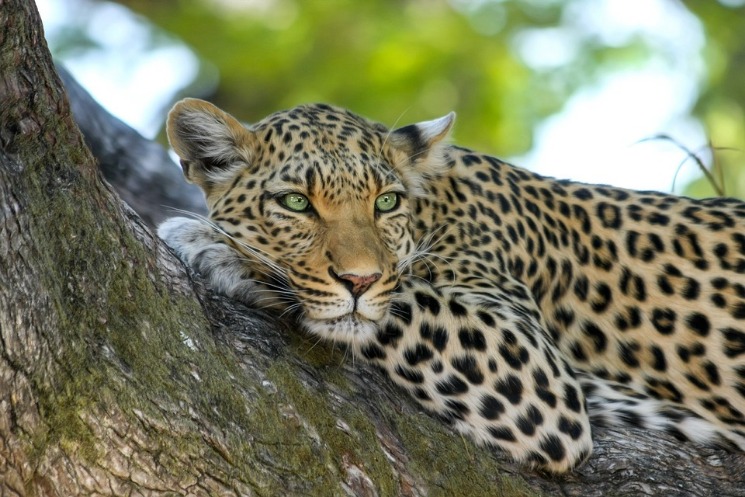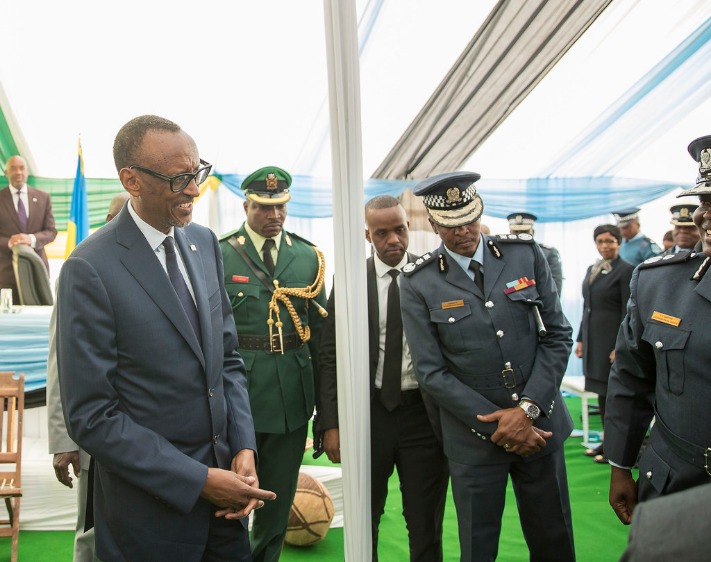Best Seasons to Visit the Okavango Delta
The Okavango Delta in Botswana is a spectacular wilderness that offers unique wildlife experiences throughout the year. However, the best seasons to visit depend on what you hope to see and do. Whether it’s the lush floodplains teeming with animals or the dry season that offers excellent game viewing, understanding the seasonal changes can help you plan the perfect safari adventure.
Dry Season (May to October)
The dry season, from May to October, is considered one of the best times to visit the Okavango Delta in Botswana. During this period, the landscape is open and accessible, making wildlife sightings more abundant as animals congregate around remaining water sources. The clear skies and cooler temperatures create ideal conditions for safaris and photography. Additionally, the low water levels in the Delta offer excellent opportunities to explore by land, providing visitors with a chance to observe a diverse array of wildlife in their natural habitat. This time of year also offers serene scenery and minimal rain, ensuring a more comfortable and enjoyable experience for travelers.
Wet Season (November to April)
The Wet Season, from November to April, is considered one of the best times to visit the Okavango Delta in Botswana. During this period, the landscape bursts into lush greenery as the seasonal rains fill the delta with water, creating a vibrant and dynamic environment. This season offers unique opportunities for travelers to witness bird migrations, including notable species like the migratory birds that arrive in search of breeding grounds. The increased water levels also attract a variety of wildlife, making game viewing particularly rewarding through boat safaris and mokoro trips. Additionally, the wet season brings fewer tourists, providing a more exclusive and immersive experience amidst Botswana’s renowned wilderness. Visiting during this time allows adventurers to enjoy a different, vibrant perspective of the delta’s ecosystem that is both stunning and teeming with life.
Peak Wildlife Viewing Periods
The peak wildlife viewing periods in the Botswana Okavango Delta offer travelers the best opportunity to witness the abundant and diverse wildlife in their natural habitat. These prime times coincide with seasonal changes that attract animals to water sources, making safari experiences more vivid and memorable. Planning your visit during these periods ensures optimal sightings of large herds, predator-prey interactions, and birdlife, providing an unforgettable adventure in this world-renowned wilderness area.
Optimal Time for Big Game Sightings
The best time to visit the Botswana Okavango Delta for peak wildlife viewing is during the dry season, from May to October. During these months, water levels recede, concentrating animals around remaining water sources, making Big Game sightings more frequent and easier to observe. The cooler temperatures also create more comfortable conditions for visitors and wildlife alike. August and September are particularly ideal, as the dry season is at its peak and animals are often seen in large herds gathering around waterholes. Visiting during this period ensures an optimal experience for viewing a diverse range of wildlife, including elephants, lions, leopards, and buffalo, in their natural habitat.
Chance to Witness Bird Migrations

The best time to visit the Botswana Okavango Delta for peak wildlife viewing and the chance to witness bird migrations is during the dry season, from May to October. During these months, animals gather around water sources, making it easier to spot wildlife. Additionally, this period coincides with the southern hemisphere’s bird migration season, offering excellent opportunities to observe a diverse array of bird species, including waterfowl, raptors, and migratory birds. Visiting during this time ensures a rewarding safari experience with abundant wildlife activity and vibrant birdlife across the delta ecosystem.
Climate and Weather Conditions
The climate and weather conditions in Botswana, particularly in the Okavango Delta, play a crucial role in determining the best time to visit. Understanding the seasonal patterns and climate variations helps travelers plan their trips to experience the region’s breathtaking wildlife and natural beauty at its peak. The delta’s unique environment offers different attractions throughout the year, influenced by distinct weather conditions that enhance the safari experience.
Temperature Ranges Throughout the Year
The best time to visit the Okavango Delta in Botswana depends on the climate and weather conditions throughout the year. Generally, the region experiences warm temperatures, with significant variations between seasons. During the dry season, from May to October, daytime temperatures range from 20°C to 30°C (68°F to 86°F), creating ideal conditions for wildlife viewing as animals gather around water sources. In the wet season, from November to April, temperatures can rise higher, often reaching 35°C (95°F) or more, accompanied by heavy rains and lush greenery, which is perfect for birdwatching and experiencing the vibrant landscape. Understanding the temperature ranges and weather patterns helps travelers choose the optimal time for their visit based on their preferred activities and climatic comfort.
Rainfall Patterns and Their Impact
The climate and weather conditions in the Okavango Delta play a significant role in determining the best time to visit. The region experiences a seasonal pattern with distinct wet and dry periods, which directly influence the overall wildlife viewing experience. During the dry season, from May to October, the weather is typically cooler and rainfall is minimal, causing water levels to recede and wildlife to congregate around remaining water sources. This makes wildlife spotting more accessible and rewarding. Conversely, the rainy season, from November to April, sees heavy rainfall that floods large parts of the delta, creating lush landscapes and abundant new growth. While this period offers stunning scenery and migratory bird opportunities, it can also hinder travel and reduce visibility for game viewing. Therefore, understanding rainfall patterns and their impact on the environment helps visitors plan their trips for optimal experiences in Botswana’s Okavango Delta.
Wildlife and Birdlife Activity
The Okavango Delta in Botswana is a renowned wildlife haven, offering a stunning display of birdlife and diverse animal species. Visiting at the right time ensures a spectacular experience, as the abundance of wildlife varies throughout the year. Understanding the best seasons to explore this unique ecosystem allows visitors to witness the breathtaking natural beauty and vibrant birdwatching opportunities that make the Okavango Delta a top destination for nature enthusiasts.
Animal Behavior in Different Seasons
The best time to visit the Okavango Delta in Botswana for wildlife and birdlife activity varies throughout the year, depending on seasonal changes that influence animal behavior and bird sightings. Understanding these patterns can enhance your safari experience and increase your chances of observing diverse wildlife in their natural habitats.
During the dry winter months from May to September, animals congregate around permanent water sources, making it easier to spot large herds of elephants, lions, and other wildlife. Birdlife is also abundant during this period, especially in the early mornings when migrant birds arrive, and resident species are active. Animal behavior during this time includes increased foraging and social interactions as they prepare for the hotter months ahead.
In the wet summer months from October to April, the delta floods, creating lush landscapes and numerous water channels. This period is ideal for birdwatching, with migratory birds arriving and breeding, resulting in vibrant bird activity. Animal behavior shifts as many species give birth, and young animals are often seen exploring the environment. While some wildlife disperses over larger areas, the influx of water also attracts a variety of aquatic species and predators focused on these resources.
- May to September: Best for wildlife viewing, especially large mammals around water bodies.
- October to April: Best for birdwatching, breeding activities, and experiencing the delta’s lush, flooded scenery.

Bird Species to Watch for During Each Period
The best time to visit the Okavango Delta in Botswana for wildlife and birdlife viewing is during the dry season, from May to October. During this period, animals congregate around water sources, making sightings easier and more frequent. Bird enthusiasts will particularly enjoy visiting in the early months, as migratory species arrive, adding to the rich diversity of birdlife. As the season progresses into the cooler months, the bird population peaks, with species such as the African Fish Eagle, Kingfishers, Bee-eaters, and herons readily visible. Resident species like Lilac-browned Rollers and African Barbets are also commonly observed. Visiting during this time allows for optimal wildlife photography and birdwatching opportunities, as the lush scenery and abundant animals create a spectacular natural spectacle. The dry season is considered the prime time to experience the full range of Okavango Delta’s vibrant wildlife and avian activity.
Visitor Experience and Accessibility
Enhancing visitor experience and ensuring accessibility are essential aspects of exploring the breathtaking Okavango Delta in Botswana. A well-planned visit can significantly enrich your adventure, allowing you to fully enjoy the natural beauty and diverse wildlife. Understanding the best time to visit, along with accessible options, helps travelers make informed decisions for an unforgettable trip to this unique wilderness area.
Best Time for Safari Tours and Activities
The best time to visit the Botswana Okavango Delta for a memorable safari experience depends on various factors such as wildlife viewing, water levels, and accessibility. Ensuring visitor comfort and accessibility is essential for an enjoyable adventure.
Visitor Experience and Accessibility
During peak seasons, the delta offers excellent wildlife sightings and lush landscapes. Facilities and roads are typically well-maintained, providing easier access for visitors, including those with mobility challenges. Planning your trip during the right time can greatly enhance your overall experience, ensuring you can enjoy the natural beauty and vibrant wildlife peacefully.
Best Time for Safari Tours and Activities
- May to September: This dry season attracts wildlife to water sources, offering superb game viewing opportunities. The sparse vegetation makes animals easier to spot, and lodges often have good accessibility options.
- October to November: As water levels rise, birdwatching becomes particularly rewarding, and lush scenery offers unique photographic opportunities. However, some areas may be less accessible due to increased water coverage.
- December to April: The wet season brings vibrant landscapes and the birth of young animals but may hinder travel due to floodwaters and muddy conditions. Accessibility can be limited, and some activities might be restricted during heavy rains.
Travel Considerations During Different Seasons
The best time to visit the Okavango Delta in Botswana depends largely on your preferences for visitor experience and accessibility. During the dry season from May to October, wildlife viewing is at its peak as animals gather around water sources, and the landscape is more accessible due to lower water levels. This season offers excellent opportunities for game drives and safaris, making it a popular choice for travelers seeking vibrant animal sightings. However, accessibility can sometimes be limited by the dry conditions, especially in more remote areas.
In contrast, the wet season from November to April transforms the delta into a lush, vibrant habitat filled with birdlife and pregnant with endearing scenes of nature’s renewal. Although accessible areas may be more challenging to reach due to flooded waterways, this period is perfect for birdwatching enthusiasts and those interested in witnessing the delta’s natural regeneration. Travel considerations include potential rains that could impact road conditions and flight schedules, so planning ahead is essential. Overall, the choice of season hinges on whether the visitor values prime wildlife sightings or prefers experiencing the delta’s lush environment and unique seasonal behaviors.





0 Comments